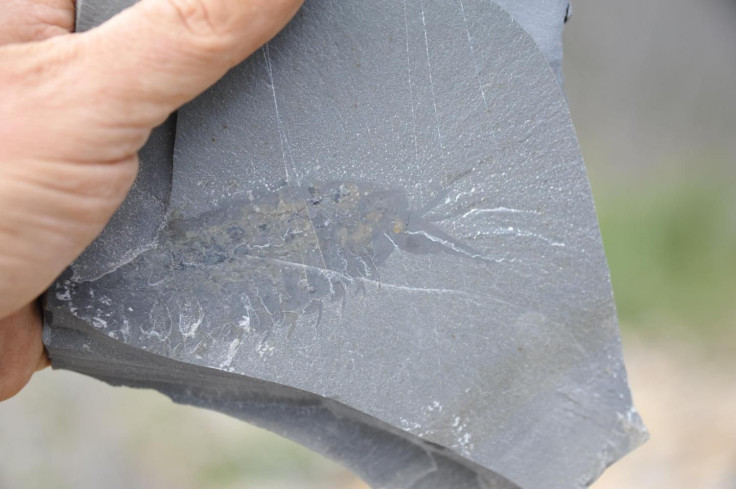4-Eyed, Lobster-Like Fossil Way Older Than Dinosaurs Found In Canada's Marble Canyon Site

Canadian and U.S. researchers say they have found the fossil of a four-eyed marine creature with claws that is the ancestor of modern-day lobsters, butterflies and spiders. The fossil of Yawunik kootenayi was found in the Marble Canyon site, part of the Canadian Burgess Shale fossil deposit.
An international team led by paleontologists from the University of Toronto, the Royal Ontario Museum in Toronto and Pomona College in California said the creature lived as long as 508 million years ago, more than 250 million years before the first dinosaur, and is the first new species to be described from the site in Kootenay National Park, about 25 miles from the original Burgess Shale site in Yoho National Park. The site was discovered in 2012.
Yawunik had long frontal appendages that look like the antennae on beetles and shrimp. The appendages had three long claws, two of them with teeth to help catch prey. The creature was able to move its appendages forward and backward, and could spread them out during an attack.
"This creature is expanding our perspective on the anatomy and predatory habits of the first arthropods, the group to which spiders and lobsters belong," Cedric Aria, a Ph.D. candidate at the University of Toronto's Department of Ecology and Evolutionary Biology and lead author of the study, said in a news release. "It has the signature features of an arthropod with its external skeleton, segmented body and jointed appendages, but lacks certain advanced traits present in groups that survived until the present day. We say that it belongs to the 'stem' of arthropods."
Yawunik had no appendages on its head to help process food, unlike modern insects and crustaceans, Aria said.
The researchers used a scanning electron microscope to map the fossil and determine its composition down to the atomic level. "This gives us a remarkable perspective on the fossils, allowing anatomical structures to be visualized more precisely," said Robert Gaines, associate professor of geology at Pomona College.
The name of the fossil is a tribute to the Ktunaxa people who reside in the Kootenay area. The name recalls a mythological figure that was brought down by other animals to eliminate its threat. It is a central figure in the Ktunaxa creation story, said Donald Sam, Ktunaxa National Council director of traditional knowledge and language.
The research was published last week in Palaeontology.
© Copyright IBTimes 2024. All rights reserved.












